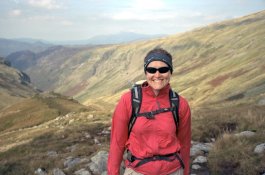Long time ago I've discovered I do not need it, and now I'm using Lightroom exclusively. The Lightroom has everything I need except for negative->positive conversion. And the Lightroom is faster than PS, at least for me. I think that my script may be useful for people who are deploying similar workflow.
Ahh, I got you. I have access to Photoshop through work, so it represents a no-cost option for me.
I tried out the newest version of your script. It's pretty nice.
I acknowledge you can get something very quickly with LR/Camera Raw, and with the combination of your script and Camera Raw, I was able to quickly match (and best) some of the minilab scans I've gotten from some 'problem' negatives. These are negatives in tough lighting (tungsten balanced fluorescents, etc.) or that contain a wide scene brightness range. However, I get what I think of as better color using PS, or more importantly, RGB curves.
Here are my two problems with Lightroom/Camera Raw.
- The big problem I have: color balancing seems to be limited to only to moving along the yellow/blue and magenta/green axes. We are missing the cyan/red adjustment. Maybe there's another way to access this and I'm just overlooking it. I know there are the split toning options and the complicated color panel with hue, sat, and luminance. But, a lot of my initial color correction makes use of all three curves, and I'm having a hard time duplicating this in Camera Raw.
Furthermore, these adjustments seem to be limited to moving the midpoint around, and not the endpoints. I'm finding that most of my initial color correction of negatives can be done by merely moving the endpoints of the RGB curves around individually. I can't seem to replicate this in Camera Raw. This is a step that your script does (in addition to the inversion); I find I need to make these adjustments with some visual feedback. The areas where I find this really problematic is with skintones, especially in mixed lighting.
- Contrast changes and curves seems to be luminosity only. This is alright a lot of the time, but it's nice to have the flexibility of switching over to a normal blending mode as well.
If you look at the characteristic curve of a color negative, you see that the RGB layers have different densities for a given exposure, but (roughly) the same gammas. Assuming we can keep the gammas of each layer the same, setting the black point to the right RGB value should take care of most of our color correction. The white point should also be set in conjunction with the same amount of shift. This would cause the RGB characteristic curves to overlay, given use a neutral gray scan and proper color balance. Minor curve adjustments could then deal with mixed lighting or slight gamma differences in the RGB characteristic curves.
As I understand it, your script guesses at the white and black point by reading the min and max densities in the scan and sets the endpoints of the curve accordingly. This is more or less analogous to one of the auto color modes in Photoshop, and should get you pretty close. However, I'm not seeing how Lightroom/Camera Raw gives you the tools to correct for minor errors in that process. If the brightest highlight in the scene is instead a light green, automatically assuming it's bright white isn't going to give you the right color balance. Am I correct that negfix wouldn't get this right? Furthermore, is there an easy way to correct for this in Lightroom? There is Photoshop, just by moving the endpoint of the green curve.
Maybe I'm over thinking all of this. Lightroom certainly does let you process scans quickly to pretty good color. Maybe that's enough.







 I'm assuming that the curves are linear (in log space), but I know they aren't. Any deviations to this I accept as the characteristic of that particularly film and of film in general.
I'm assuming that the curves are linear (in log space), but I know they aren't. Any deviations to this I accept as the characteristic of that particularly film and of film in general.
 I still have a couple pictures that are harder to correct in LR after running your script, particularly ones with a huge dynamic range. It's doable, but in these cases, it's much faster for me to pop it into photoshop, invert, and adjust the levels.
I still have a couple pictures that are harder to correct in LR after running your script, particularly ones with a huge dynamic range. It's doable, but in these cases, it's much faster for me to pop it into photoshop, invert, and adjust the levels.